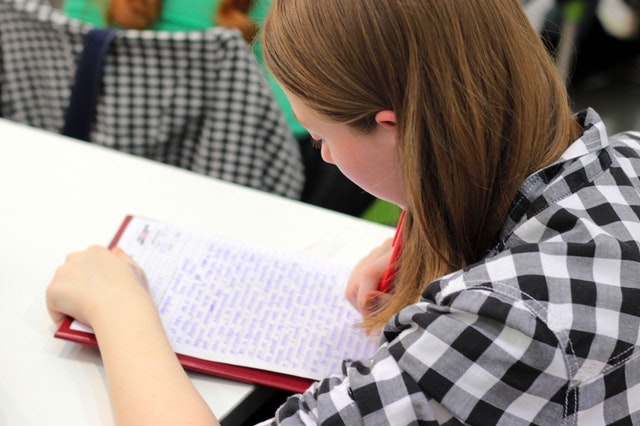Tips for Handwriting Without Tears for your Kids
Parents always want their kids to learn handwriting without tears. Here are some useful tips that can be beneficial for parents to enhance their child's handwriting skills:
1. Consistent Practice: Like any other skill, handwriting improves. Set aside short, regular sessions for handwriting practice.
2. Right Tools: Use pencils that are appropriate for beginners, typically those that are thicker or have grip support.
3. Posture Check: Ensure the child is seated comfortably at a table, with their feet flat on the floor. Their back should be straight and shoulders relaxed.
4. Paper Position: For right-handers, the paper should be turned slightly to the left; for left-handers, slightly to the right. This helps in smooth wrist movement.
5. Pencil Grip: Encourage the child to hold the pencil with a tripod grip (using the thumb, index, and middle fingers).
6. Guided Lines: Use lined paper or worksheets with a clear middle line. This can help children gauge the size of their letters.
7. Forming Letters: Teach children to start letters from the top and move downwards. This makes letter formation smoother and more efficient.
8. Letter Families: Introduce letters in families/groups based on their formation. For example, c, a, d, g, and q can be one group since they all start with a similar curve.
9. Avoid Rushing: Emphasize the importance of adequately forming each letter rather than hurrying through.
10. Use Mnemonics: Mnemonic devices can aid in remembering letter shapes. For instance, for the letter 'b', you can say, "Down the bat, around the ball."
11. Feedback: Provide positive reinforcement when they do well and gentle correction when needed.
12. Tracing Activities: Let them trace over dotted letters before freehand writing. This gives them a feel for each letter's shape.
13. Fine Motor Skills: Strengthen their fingers with activities like playing with play-dough, threading beads, or using tweezers to pick up small objects.
14. Breaks: If the child is frustrated or tired, taking short breaks is okay. Pushing too hard can result in phobia.
15. Consistent Language: Use consistent terminology. If you call the short line in the letter 'a' its "tail", keep using that term.
16. Variety: Mix things up with different mediums. Let kids practice writing in sand, with chalk on the pavement, or even with water on a chalkboard.
17. Cursive vs. Print: Start with print, but consider introducing cursive once they master basic handwriting. Some kids find cursive easier and more fluid.
18. Spacing: Use tools like a popsicle stick or a finger to teach kids the right amount of space between words.
19. Handwriting Apps: There are many educational apps designed to help with handwriting. They can be a fun way to practice.
20. Patience: Remember that every child is different. Some may pick up handwriting skills faster than others. Celebrate small achievements and be patient with their pace of learning.
So you can have handwriting without tears for kids, it's crucial to ensure that kids maintain their enthusiasm for writing. The primary aim should be communication, and neatness can come with time.

Some of our Homeschool Resources
Books for Kids to Read
Boys Without Names
by Kashmira Sheth
This is part of my children's homeschool reading curriculum. One of them loves this book as soon as he started reading it. He spent a lot of time reading it until he finished the whole book. And he likes reading over and over, too. It's one of his favourites. This is a powerful book that is too rare these days. It reveals some of the experiences happening to children around the world today. It can open your heart to the plight of those who are suffering. It is filled with tales of ancient India. All the characters are so true to life. It is really important that young people should learn about the world around them.
Little Pear
by Eleanor Frances Lattimore
I also included this book in our homeschool reading curriculum. 2 of my kids love this book. This is a great chapter book for the young readers. It is both absorbing and well written. It is gentle without being bland. It has a great insight into a different culture, not overburdened by it, simple language, and interesting adventures.
Little Pear is a young boy who lives in a small village in China. Although his story takes place long ago, he is much like any little boy today--always on the lookout for excitement and adventure! Little Pear is just looking for fun, but he has a knack for finding trouble without even trying! Join him as he stows away to the fair in a wheelbarrow full of vegetables, nearly flies away on a kite, has a mishap with a firecracker, and is rescued from the river by a houseboat family.
The Success Principles for Teens
How to Get From Where You Are to Where You Want to Be
by Jack Canfield
I included this book for my son's homeschool reading curriculum and I am happy that he picks it to to read without me telling him to.
Everyone wants to be successful—and today's youth are no exception. After the massive success of Jack Canfield's The Success Principles,
thousands of requests came rushing in to develop the most important
success strategies for today's teenagers. Their calls have been
answered.
Even though many teens are urged to get good grades,
many feel lost when it comes to setting powerful goals and creating the
life they really want. Jack Canfield, cocreator of the famed Chicken
Soup for the Soul series has teamed up with successful author and young
entrepreneur Kent Healy to design a fun and engaging teen-friendly book
that offers the timeless information and inspiration to get from where
you are to where you really want to be.





